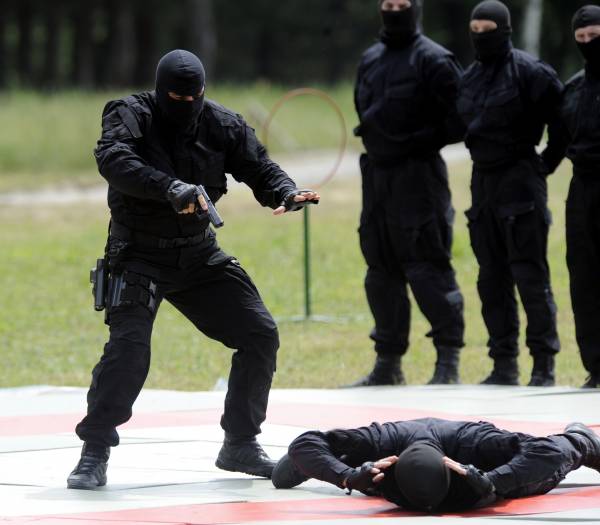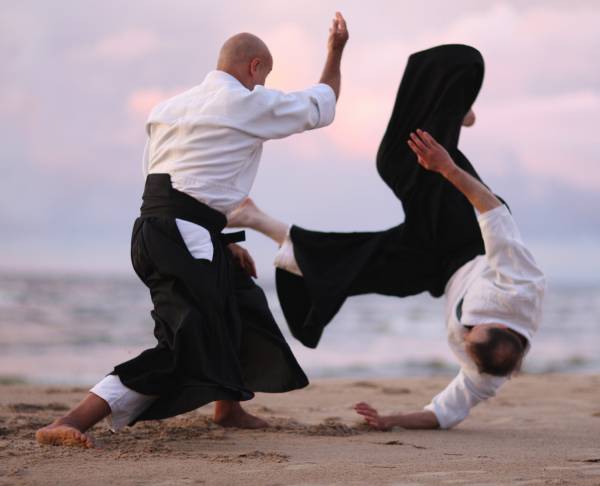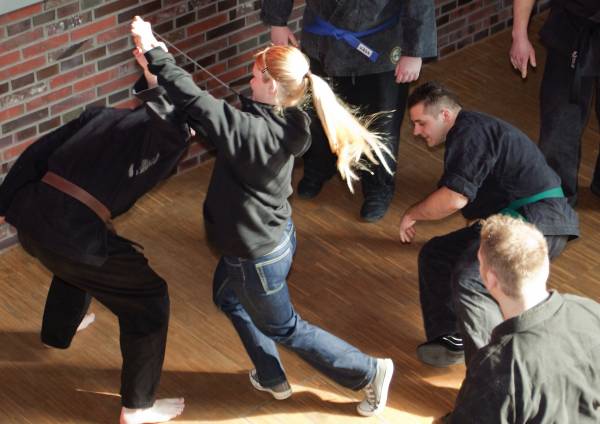Violence is bigger than all of us. Just as we will never understand people fully, we can never understand a subject as convoluted and complex as violence.
Unless you’ve been exposed to a lot of violence, your training will be subjective. Most people’s idea of violence is one based off their own interpretation of what they learn in the dojo, see in the ring, or watch in a movie. In rare cases it comes from personal experience working as a police officer or prison guard. But how many of us deal with violent offenders daily?
Violence Is About Conflict
Many people teaching martial arts have little to no experience with real world, brutal violence yet proclaim to teach self-defence. And very few critically look at what they are teaching or have been taught. Many of us have been caught up in dogma, a way of looking at violence due to our work – the martial art or ring sport in which we participate. Because we lack real world experience we tell ourselves a story about how we think it is rather than how it actually is in reality. We assume way too much.
“We often use assumption, reason, tradition, and recreation as a way of training for real world violence.”
Unfortunately in the realm of martial arts, “sexy” sells. Many practitioners are not able to separate reality from the stuff they see in the movies. And this is a problem if we are teaching others the same. We often use assumption, reason, tradition, and recreation as a way of training for real world violence.
Violence is ultimately about conflict. Conflict comes in many forms:
- A group of guys brawling in pub.
- Two muay Thai fighters duelling it out in the ring.
- A psychiatrist trying to administer a sedative to an aggressive emotionally disturbed person.
- A police officer trying to handcuff an ice addict.
- A crowd controller escorting a drunk off the premises.
- Someone being held up at an ATM under knifepoint.
- Armed bandits invading a home.
- A sexual predator following a young female home from the bus stop.
- Kids bullying on the playground and a violent drunken spouse abusing his partner.
These are all different situations and all require different psychological, tactical, and physical skills. Yet they are all lumped into the subject of violence and self-defence. The only real experts are in fact the criminals who perpetrate violence onto others regularly and without conscience – the predators.

Do You Teach Self Defence?
The million dollar question is how do we train for something that is so hard to define?
Martial artists try to do it all. Self-discovery and enlightenment, physical fitness, street fighting, ring fighting, and self-defence. We try to be all things to all people. We even throw in military and combat training for good measure to macho it up. Whilst all these aspects can all be connected in some way, they are not interchangeable.
Training in a martial art is not necessarily training for self-defence. Training for a ring sport or mat sport is not training for self-defence either. And training for combat is also not self-defence unless you walk around with an automatic weapon in tactical gear on the street day to day.
“Because we lack real world experience we tell ourselves a story about how we think it is rather than how it actually is in reality. We assume way too much.”
Whilst all of these domains most certainly have practical applications that can be useful in self-defence training, they are not, in essence, self-defence training. Yet when someone rings up a martial arts school and asks, “Do you teach self-defence?” the answer is always yes. And that irks me. The dollar has become more important than integrity and our moral and social responsibilities.
If you look at the roots of most traditional martial arts and how they still train, it has little to do with dealing with modern day violence and assaults. If we take an amazing traditional art like ninjitsu and look at its origins and its reason for practice – assassination by stealth – then I think we can safely say many people are going to question its modern day self defence applications.

I love the traditional arts. They are amazing and how I got started. I don’t think one style or system is better than another. But I think the problem lies in practitioners being delusional about what it is they are training for. While carrying a ninjato, climbing trees, and disappearing into puffs of smoke might humourously be considered useful strategies to avoid conflict, they probably don’t have practical application for modern day self-defence in 2015.
“Stress inoculation must happen in training, otherwise we risk sending people into the wilderness with false confidence.”
My experience in learning technique in many systems is often like this: Attacker assaults defender. Defender does technique X. The technique is successful. Finish. And it woefully attempts to replicate real world violence. When you think about effective self-defence training, does waiting for ideal circumstances to perform technique X seem like a great strategy?
In many real life situations, unless we are assaulted by surprise there is both a pre-confrontation and pre-fight stage. So why aren’t we learning in training how to deal with the situation earlier to avoid the physical assault to begin with? It is foolish to believe that the chance of you being attacked under ideal circumstances will ever happen. Attacks don’t occur in well-lit spacious areas with soft matting and minimal contact.
Real World Self-Defence Training
Useful training needs to address how to recover from the fear, pain, and surprise of an assault as quickly as possible to survive. Stress inoculation must happen in training, otherwise we risk sending people into the wilderness with false confidence.
You may be injured and in pain before you are even aware of the conflict and what is going on around you in a real life situation. You will need to break free of the shock and surprise to beat your own fear and change instantly into the mindset of a predator from that of a victim. This needs to happen in just a few seconds in order to survive. This is no easy feat. But it needs to be trained if we are to successfully prepare people for “the wild”.
“Non-reality based training sets you up to become a victim rather than learning to take the upper hand with initiative.”
Real self-defence training then also needs to address how to avoid violence and how to not be assaulted in the first place, either through bad luck or stupidity. Training needs to be preventative and we need to spend more time learning prevention techniques. We should be looking to flee or avoid, de-escalate or negotiate; posture, stun and run; or comply depending on the context. If it has to become physical, then we must train to do so on our terms as much as possible.

Stop Being a Victim
Waiting for a person to bring violence to you before you execute your technique isn’t a great strategy. We need to outwit, not just outfight. Non-reality based training sets you up to become a victim rather than learning to take the upper hand with initiative. There needs to be a change in mindset from one of reluctant victim to wary predator in order to shift the odds of surviving violence in your favour.
You’ll Also Enjoy:
- In Defense of Self: The Real Mental Value of Self-Defense Training
- The Top 4 Martial Arts for Police Training
- Do Violent Sports Create Violent People?
- What’s New on Breaking Muscle Today?
Photos courtesy of Shutterstock.






